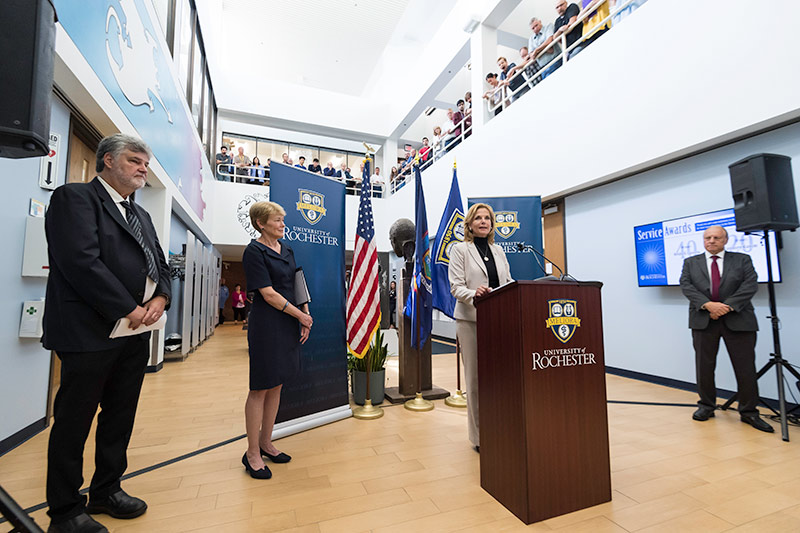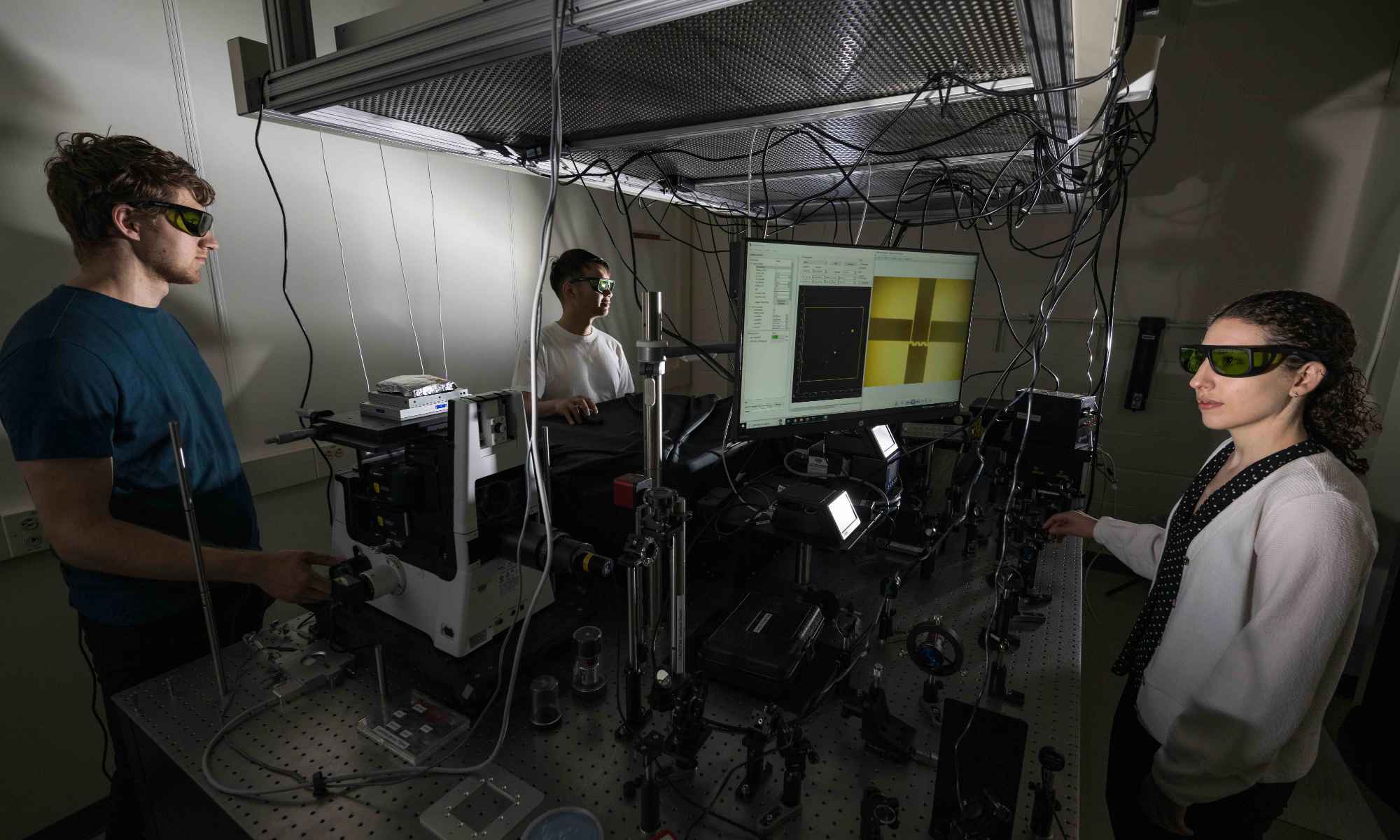During a visit to the University of Rochester’s Laboratory for Laser Energetics (LLE), top federal officials said the LLE plays a crucial role in advancing research vital to maintaining the safety, security, and effectiveness of America’s nuclear security enterprise.
“The fundamental research done here [at the LLE] helps keep our nation on the cutting edge of science, which, in turn, helps keep our nation safe,” said National Nuclear Security Administration (NNSA) Administrator Lisa Gordon-Hagerty, who, along with US Representative Joseph Morelle, visited the LLE on Tuesday. As part of a visit she called “truly inspiring,” Gordon-Hagerty met with researchers and students and toured the OMEGA and OMEGA EP laser facilities.
LLE Director Michael Campbell said the LLE plays a key part in providing science and expertise to support the NNSA in ensuring a reliable and secure nuclear deterrent. “We’re fully committed to supporting a national program that is the best in the world and keeps the United States foremost in this important field of national security,” he said.
In addressing a group at the LLE, Gordon-Hagerty noted that research conducted by LLE scientists in high-energy density physics (HEDP) and inertial confinement fusion (ICF) is important to advancing the NNSA’s mission.
“Our nation’s nuclear deterrent has been effective in great part because of the understanding of how matter behaves in extreme states, precisely the work that is accomplished here,” she said.
This work includes Nobel-Prize winning research conducted by Gerard Mourou, a former engineer and senior scientist at LLE, and Donna Strickland ’89 (PhD). Strickland and Mourou were jointly awarded the 2018 Nobel Prize in Physics for work they undertook at the LLE on chirped pulse amplification; the work was the basis of Strickland’s PhD dissertation at Rochester, under the direction of her advisor, Mourou. University President Sarah C. Mangelsdorf said the 2018 Nobel Prize in Physics is “a perfect example of what is possible when students have access to world-class facilities and mentors.”
Last year the House and Senate included $80 million—a $5 million increase over fiscal year 2018—for the LLE as part of its version of the FY 2019 energy and water appropriations bill. Morelle said he hopes the Senate, when it resumes sessions in September, will once again pass appropriation bills for what he calls the “essential work” conducted at the LLE. “This is a world-class institution, performing cutting-edge scientific research that has led to Nobel Prize-winning discoveries,” Morelle said.

But, while research conducted at the LLE is an asset to national security at the federal level, Morelle said the LLE also greatly contributes to the Rochester region.
“Not only does this facilitate ground-breaking research, it has a profound impact on our scientific community,” he said. “It supports hundreds of local jobs, it plays a significant role in strengthening our regional economy.”
Said Mangelsdorf: “Continued investment in the LLE will advance our nation’s scientific leadership, strengthen our national and economic security, foster the development of new technologies and companies, grow our economy, and support efforts to find affordable, plentiful, and efficient sources of energy for the future.”
The LLE was established at the University in 1970 and is the largest US Department of Energy (DOE) university-based research program in the nation. As a nationally funded facility, the LLE conducts implosion and other experiments to support a DOE program to explore fusion as a future source of energy, to develop new laser and materials technologies, and to conduct research and develop technology related to high-energy-density phenomena. The LLE is recognized nationally and internationally for its substantial contributions to the DOE’s inertial confinement fusion and high-energy-density physics programs in partnership with three national laboratories (Los Alamos, Sandia, and Livermore). In addition, the LLE provides graduate and undergraduate educational programs to students at Rochester and other universities across the country, and it operates a national program to support qualified researchers throughout the United States to conduct research using its facilities.




